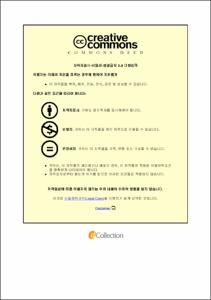남강댐 하류하천의 오염원별 기여도 및 낙동강 본류의 수질 영향 평가
- Abstract
- The Nam River basin is divided into the Nam river dam rage sphere and the Nam River rage sphere. The Nam River rage sphere`s length is 77.6 km from the dam of the Nam river. And many cities (Jinju, Haman, Uiryeong, Goseong-gun, etc.) and Jinju-Changping industrial complex is located in the rage sphere, so there is the high probability that contamination occurs. Nevertheless it also has a key point of the solution of the water supply in Western Gyeongnam there are few of the studies of the Nam River in term of the watershed management.
This study estimates the pollutant load per the pollution source in the downstream watershed of the dam of the Nam River, and investigates and analyzes the point/non-point sources and the characteristics of the tributaries center. This research also estimates the effect of the water pollution in the dam of the Nam River to the main stream of the Nakdong River and to achieve a water quality improvement. Futhermore, the correlation analysis and exploratory factor analysis between the parameters are performed to identify the contamination contribution of the major turbidities in the Nam River watershed. This study is expected to present a customized plan to manage the Nam River Basin in the future through integrated watershed management techniques.
- Issued Date
- 2016
- Awarded Date
- 2016. 8
- Type
- Dissertation
- Publisher
- 부경대학교 산업대학원
- Affiliation
- 부경대학교 산업대학원
- Department
- 산업대학원 환경공학과
- Advisor
- 김일규
- Table Of Contents
- 제 1 장 서론 1
제 2 장 이론적 배경 4
2.1 유역 현황 4
2.2 수질오염총량관리제도 7
2.2.1 개요 7
2.2.2 오염배출부하량 8
2.3 통계분석 이론 9
2.3.1 요인분석 9
2.3.2 상관성 분석 14
2.3.3 회귀 분석 16
제 3 장 연구 방법 18
3.1 자료 수집 및 수질 특성 분석 18
3.1.1 강우관측시설 18
3.1.2 수위관측시설 19
3.1.3 수질관측시설 20
3.1.4 남강댐 22
3.1.5 수문 및 수질 특성 분석 24
3.2 통계분석방법 28
제 4 장 결과 및 고찰 29
4.1 오염배출부하량(TMDL) 분석 29
4.1.1 오염원 현황 29
4.1.2 오염배출부하량 기여율 분석 36
4.2 요인 분석 40
4.2.1 입력자료 40
4.2.2 요인분석 결과 42
4.3 상관성 분석 44
4.3.1 주요항목 상관관계 분석 44
4.4 부영양화 지수(TSI) 53
4.5 회귀 분석 57
4.5.1 클로로필-a 회귀분석 57
4.5.2 본류영향 평가 59
제 5 장 결론 62
참고문헌 64
- Degree
- Master
- Files in This Item:
-
-
Download
 남강댐 하류하천의 오염원별 기여도 및 낙동강 본류의 수질 영향 평가.pdf
기타 데이터 / 2.04 MB / Adobe PDF
남강댐 하류하천의 오염원별 기여도 및 낙동강 본류의 수질 영향 평가.pdf
기타 데이터 / 2.04 MB / Adobe PDF
-
Items in Repository are protected by copyright, with all rights reserved, unless otherwise indicated.